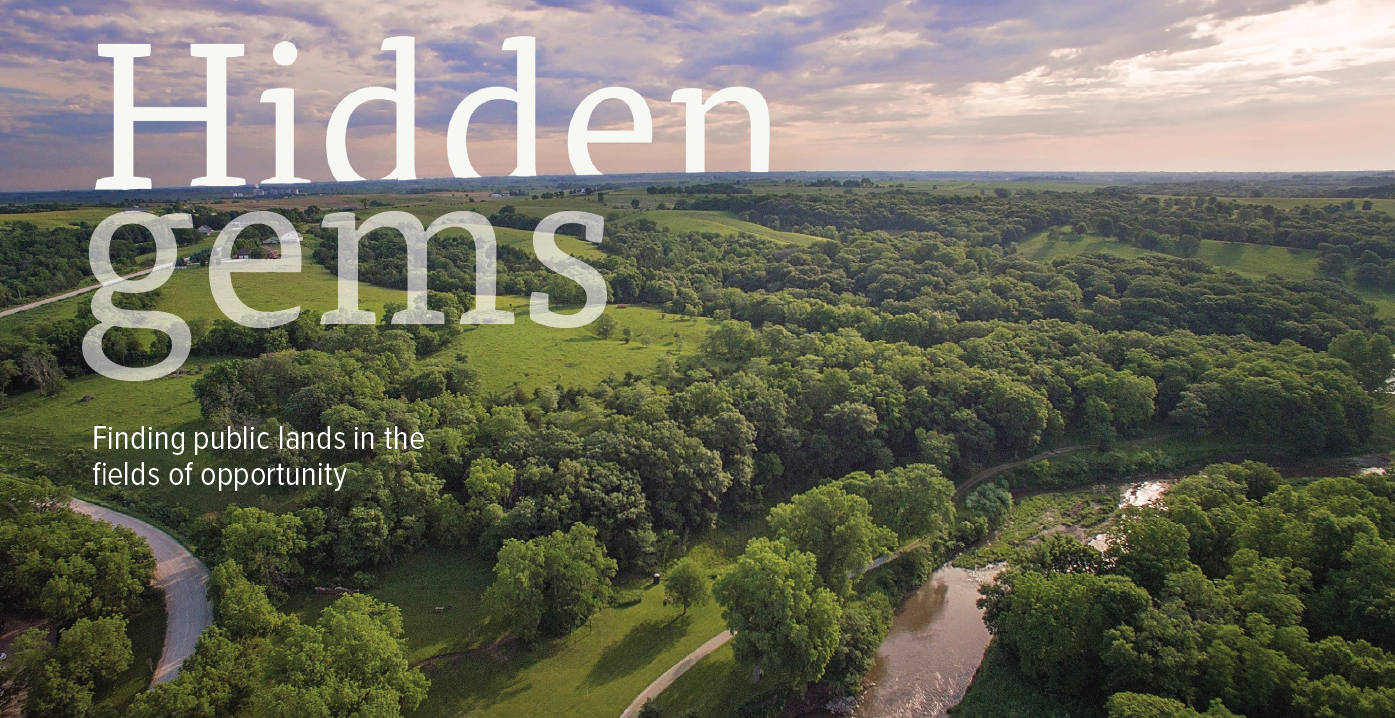Hidden Gems
By Dan Cohen on January 11, 2023 in Blog

Whiterock Conservancy, a privately managed conservation area in Guthrie County, encompasses 5,500 acres with 4,200 acres open to the public. Photo courtesy of Travel Iowa.
In the distance, a cluster of trees emerge from the landscape of corn and bean stubble. Pulling off the state highway and traveling down the county blacktop, the cluster of trees takes the form of a forested corridor winding through a small valley. Around the bend, a brown sign with white letters and an arrowhead logo comes into view. A gravel road extends up and over a hill. We park the pickup in a small lot and head off on foot into an exquisite 80-acre woodland, complete with babbling brook – a hidden gem in the altered landscape.
Welcome to the nature of Iowa – an altered state, which is a leader in the percent of original wild landscape converted to farms, towns, and roads. Although some large tracts of wildness do exist, these are the exception rather than rule. Speeding across Iowa interstates, or even state highways, people may see very little evidence of the nature of Iowa. Occasional signs point the way to state parks and other larger recreation areas with amenities, but these are few and far between. However, many public areas are not signed from state highways. Iowa DOT has many rules for sign placement, including a minimum amount of parking and other amenities not available at most of Iowa’s small natural areas. It takes a larger commitment, usually requiring getting off the beaten path, to experience hidden gems.
Iowa has some wonderfully unique public lands. Most are leftover pieces of once vast prairies, wetlands, and forests with openings and edges where trees and shrubs mix with prairie and wetlands. Iowa is a land of rivers, creeks, and streams — more than 17,000 miles of interior waterways. There are fens with organic mounds of peat, marshes, floodplain and upland forests, sand and goat prairies, bits of lush tallgrass prairie, and oak savannahs. These places often only exist because they were difficult to farm and located away from urban sprawl.
Hidden gems often are ours because conservation-minded private landowners wanted the beauty and historic nature of their beloved properties made available to all of us. Most of these public lands are managed locally by county conservation boards or Iowa Department of Natural Resources and allow for various types of public use. There are some federal lands as well, and a few non-governmental groups have hidden gems open to the public.
Each precious piece of public land has a unique origin story, with colorful characters, conservation champions, successful grant writers, willing donors, and others. In addition to conservation-minded landowners and area residents, several key players and funding sources continually surface in these stories. During recent decades, Iowa’s Resource Enhancement and Protection (REAP) and Wildlife Habitat with Local Entities (Habitat Stamp) programs have leveraged donations and other funds, and together provided resources for land protection efforts. The state also manages some federal grant dollars that can trickle down to local land projects. Iowa Natural Heritage Foundation, Pheasants Forever, Wild Turkey Federation, and other non-governmental conservation organizations play important roles in many acquisitions.
There likely is a hidden natural gem close to where you live or where you may be traveling.